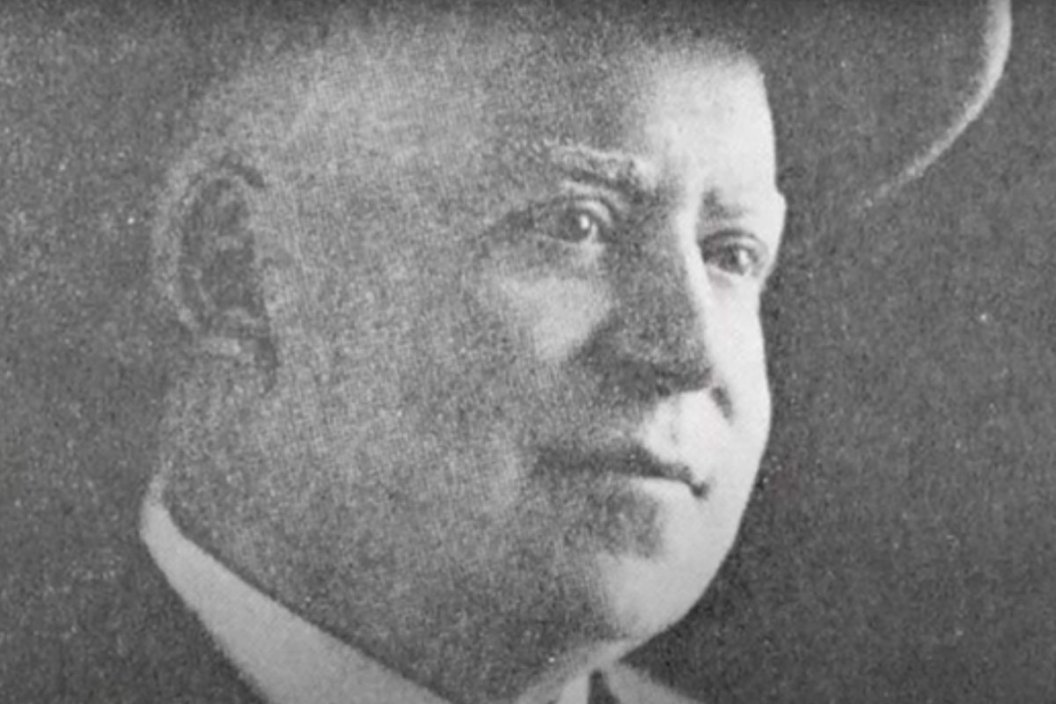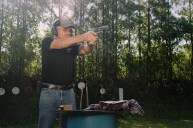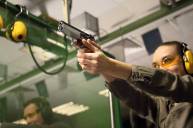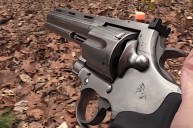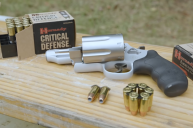This shooting legend set world records and dedicated much of his life to the pursuit of shooting a double-action revolver as quickly and accurately as possible.
When you Google Ed McGivern, the first thing you learn is that he wrote a book called Fast and Fancy Revolver Shooting back in 1938, which is remarkably still available in print today. The book covers many facets of handgun shooting, including what McGivern learned through both long-range shooting and experimentation with single- and double-action revolvers.
But there is a whole lot more to this monolith of pistol shooting whose relationship with the bullseye few shooters will ever understand. He was a trick shot expert and a quick draw extraordinaire whose resume reads like the fictional skills of an old west gunslinger of the highest order.
McGivern stood just 5 1/2 feet tall and was kind of barrel shaped—point is you wouldn't look at the guy and think he was the fastest shooter in the world at one time, but that's exactly what he was during the years between World War I and World War II. During that time, he traveled all over the United States, putting on wild, jaw-dropping shooting demonstrations with pistols, sometimes one in each hand.
His routine consisted of shooting at stationary targets and a variety of aerial targets, including clays and quarter-sized lead discs. One of his more famous trick shots was throwing a tin can in the air and shooting it six times before it hit the ground. Go ahead and try that some time and see how much respect you have for Mr. McGivern afterward.
Another famous trick of his was to throw playing cards into the air and cut them in half with bullets, edgewise. That qualifies as superhuman.
He was a true prodigy in his realm—able to hit two targets tossed in the air with two revolvers at the same time. That's not normal. Yet, this bizarrely skilled shooter made his living primarily as a sign painter in Lewistown, Montana, where he moved in 1924 and lived for 30 years.
The Guns
When McGivern first began trick shooting, he used semi-auto pistols, but realized he could shooter faster with double-action revolvers instead. If you doubt that, just watch videos of Jerry Miculek emptying a wheelgun.
Back in 1932, McGivern made it into the Guinness Book of World Records when he was 58 years old thanks to a feat of target shooting. He was on tour when he shot two rapid-fire, five-shot groups at 15 feet that could be "covered by a half-dollar piece" in under half of a second. The record stands to this day.
Ed McGivern was a fanatic about seeing just how fast and accurately a person could shoot a handgun, and he certainly had the gifts needed to push the envelope. His vision was uncannily sharp, and he had lighting fast reflexes—but he became a great shooter by always paying close attention to the fundamentals of good shooting, like a good sight picture, focusing on the front sight, and trigger control, combined with a whole lot of practice and burning through a staggering amount of ammo. Shooting was a calling for McGivern, and sixguns were the instrument of his art.
Unfortunately, arthritis put an end to his trick shooting career, but he stayed firmly entrenched in the shooting world. For years he worked with law enforcement officers all over the United States, teaching marksmanship to police officers and federal agents at various police departments and agency headquarters, including the FBI.
He used his exhibition shooting experience to others how to quickly put a lot of rounds accurately on a target under varying circumstances.
And, McGivern didn't just focus shooting fast and accurately and tiny targets up close. His long-range game was on point too. McGivern and his friend and legendary gun writer Elmer Keith were the ones who were instrumental in creating the most popular magnum handgun cartridges we still use today. Keith focused on hunting, while McGivern wanted to see how far he could push what was considered a police revolver at the time.
He demonstrated that with the proper sights and technique, a .357 Magnum revolver could be used to engage a man-sized target with accuracy at ranges out to 600 yards. His preferred sight set up for this feat was a small diameter rear aperture sight paired with a gold bead front sight.
"From that point in his life until his death in 1957, he probably devoted more hours and more thousands of rounds of ammunition to the pursuit of handgun speed than any other man has ever done," said E.B. Mann in a 1979 Field and Stream article.
That same article described so of his more famous exhibition shooting feats as follows, which further illustrate not only his uncanny eyesight and accuracy, but also blindingly fast reflexes:
- McGivern would hang a target on a string and cut the string with the first shot, and then hit the falling target with the second shot.
- He would string three targets up, on stationary and the other two swinging back and forth so they crossed in front of the stationary target—and he would break all three with a single shot.
- He would drop a coin from shoulder height, and with the same hand, fast draw and shoot as many shots as possible before it hit the ground. He could fire two, sometimes three shots.
- McGivern would lay out 10 revolvers on a bench and then pick each one up in succession and fire five shots from each in double action, for a total of 50 shots, in under 21 seconds, all hits.
- He would do the same trick as above, but with 20 guns, 100 shots, and in 47 seconds.
- This is one that could only be done with blanks. He would face an opponent who was holding an aimed, cocked revolver. McGivern would then draw from a regulation holster and fire before his opponent could.
- Two shotgun clays would be balanced on top of one another with the edges facing the shooter. McGivern would then shoot and break the bottom target, and then the top target before it hit the bench.
And those are all done with stationary targets. His aerial shooting was even more astounding.
- He would routinely throw a target in the air, draw, and shoot the target with the same hand.
- McGivern would throw a target, then an assistant would toss him a pistol that he'd catch and fire, hitting the target before it hit the ground.
- If you're into Old West gunfighting lore, you know what the Road Agents Spin was. The idea is that a pistol would be held butt forward as if it were being surrendered to someone. The shooter would then quickly spin the gun in his or her hand and fire once the other person let their guard down. McGivern would throw a target, spin the gun, and hit it.
- An assistant would throw 3.8-inch diameter discs, two to six at a time, and McGivern would hit them each with a single shot. He would often hit them edgewise.
- Here's one that's basically supernatural: He would shot 5-inch bullseyes pasted on 24-inch squares of beaver board that were tossed into the air at distance of 25-50 yards. He never missed.
- A testament to his quickdraw skills, McGivern could draw, fire, and score a lethal hit on a target at 15-18 feet away in 0.4 of a second as measured by a shot timer.
NEXT: MARLIN'S DARK MODEL 336 IS STILL CATCHING EYES
WATCH
